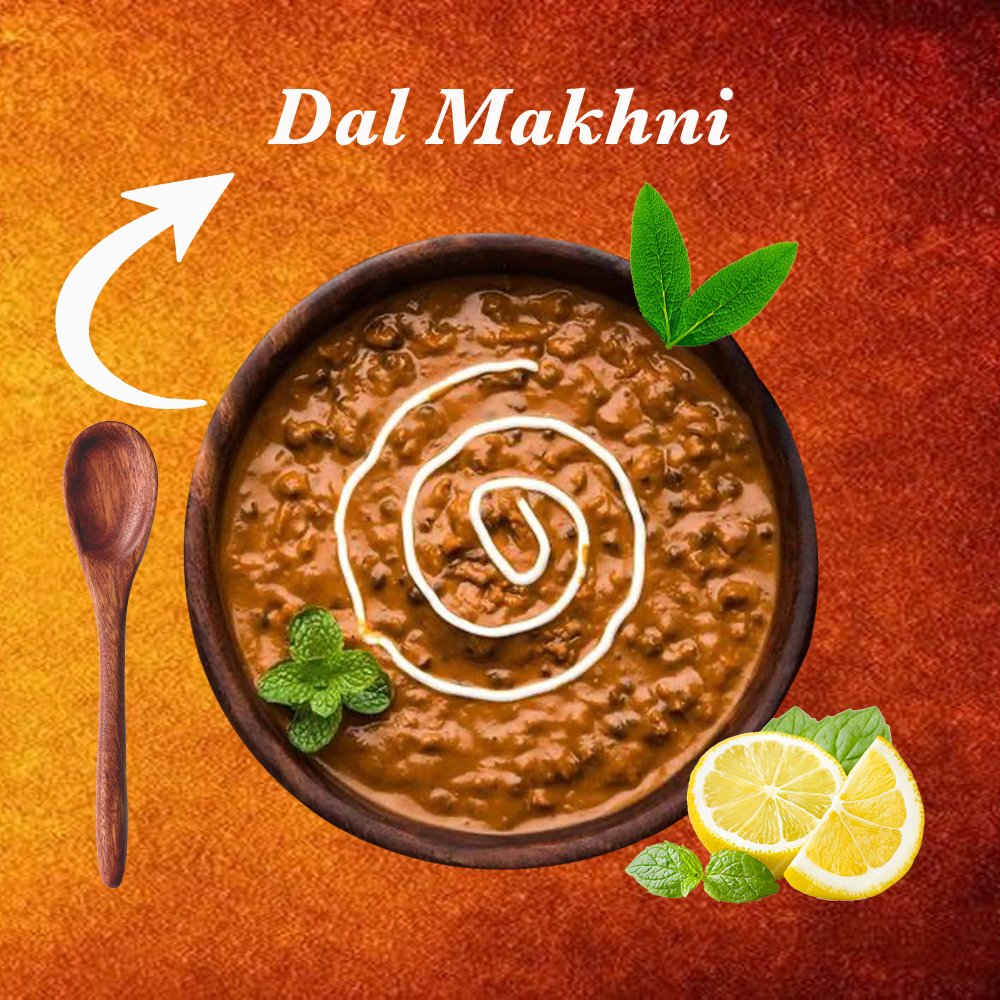Dal Makhani is one of the most beloved dishes in Indian cuisine. Rich, creamy, and bursting with flavor, it’s a staple in North Indian households and a favorite at restaurants and celebrations across the country. But as delicious as it is, many health-conscious individuals often find themselves asking: Is Dal Makhani healthy or not?
In this blog, we’ll explore the nutritional profile of Dal Makhani, its ingredients, health benefits, potential drawbacks, and tips on how to make a healthier version of this indulgent dish. Whether you’re a fan of traditional recipes or looking to tweak it for a healthier lifestyle, this article is for you.

What is Dal Makhani?
Dal Makhani is a Punjabi dish made primarily from whole black lentils (urad dal) and red kidney beans (rajma), slow-cooked with butter, cream, tomatoes, and aromatic spices. The name itself translates to “buttery lentils”—“dal” meaning lentils and “makhani” meaning buttery.
This dish has roots in Punjabi culture and has been adapted in various ways across India. It is commonly enjoyed with naan, roti, or rice and is a symbol of hearty, comforting Indian food.
Nutritional Breakdown of Dal Makhani (Per 1 Cup Serving)
| Nutrient | Approximate Value |
|---|---|
| Calories | 300-400 kcal |
| Protein | 12-15 grams |
| Carbohydrates | 35-40 grams |
| Fats | 15-20 grams |
| Fiber | 8-10 grams |
| Calcium | 60-80 mg |
| Iron | 3-4 mg |
(Note: These values vary based on preparation style and ingredients.)
Is Dal Makhani Healthy? Let’s Break It Down
✅ Health Benefits of Dal Makhani
1. High in Protein
Dal Makhani is made using urad dal and rajma, both of which are rich in plant-based proteins. This makes it a great option for vegetarians and vegans who often seek protein-rich foods.
2. Rich in Dietary Fiber
Both lentils and kidney beans are excellent sources of dietary fiber, which helps regulate blood sugar, improve digestion, and promote satiety.
3. Good Source of Iron and Folate
Urad dal and rajma contain essential minerals like iron and folate, which are particularly important for women, growing children, and individuals prone to anemia.
4. Supports Heart Health
Legumes like lentils and kidney beans are known to help reduce bad cholesterol (LDL) levels, which may reduce the risk of heart disease when consumed regularly in moderation.
5. Low Glycemic Index
Dal Makhani has a low to medium glycemic index, which means it doesn’t spike blood sugar levels quickly, making it a good choice for diabetics—especially when cooked with less cream and butter.
⚠️ Why Dal Makhani May Not Be So Healthy
While the lentils themselves are nutritious, the traditional preparation of Dal Makhani includes large amounts of butter, cream, and sometimes ghee, making it high in saturated fats and calories. This can lead to weight gain or high cholesterol if consumed in excess.
Here are a few concerns:
1. High in Saturated Fat
Butter and cream, although delicious, contribute to saturated fat, which may negatively impact heart health if consumed frequently or in large quantities.
2. Calorie-Dense
Dal Makhani is quite calorie-rich, especially when paired with naan or jeera rice. For those trying to lose weight or manage calorie intake, this can be problematic.
3. Sodium Content
Many restaurant-style preparations use a lot of salt and preservatives to enhance taste, which may be harmful for those with high blood pressure.
🥣 How to Make Dal Makhani Healthier
The good news is, with a few adjustments, you can enjoy Dal Makhani guilt-free.
1. Use Less Butter and Cream
Replace heavy cream with low-fat milk, yogurt, or cashew paste to get a creamy texture without the excess fat.
2. Cook at Home
Restaurant dishes often contain extra oil and salt. Cooking Dal Makhani at home allows you to control ingredients, portion size, and spices.
3. Add Vegetables
You can sneak in spinach, carrots, or capsicum to increase the vitamin and fiber content without changing the core taste too much.
4. Choose Healthy Sides
Instead of naan with butter or basmati rice, go for whole wheat roti or brown rice for a more balanced meal.
5. Watch the Portion Size
Even healthy foods can be fattening when eaten in large quantities. Stick to 1 cup of Dal Makhani per meal for better portion control.
🧘♂️ Is Dal Makhani Good for Weight Loss?
If prepared in a healthier way, Dal Makhani can fit into a weight loss diet. It provides protein and fiber, which help keep you full for longer. However, the calorie content can rise quickly depending on preparation style.
To include it in your diet:
- Avoid cream and butter.
- Keep the oil under 1 tablespoon.
- Add vegetables for extra fiber.
- Avoid overeating by pairing with salad or soup.
👨⚕️ Who Should Avoid Dal Makhani or Eat it Occasionally?
- People with high cholesterol should limit intake due to cream and butter.
- Individuals with kidney problems may need to monitor protein intake and should consult a doctor.
- Those trying to lose weight should watch the portion size and fat content.
🥗 Healthier Dal Makhani Recipe (Serves 4)
Ingredients:
- 1 cup whole urad dal
- ¼ cup rajma
- 1 medium onion (finely chopped)
- 2 tomatoes (pureed)
- 1 tsp ginger-garlic paste
- 1 tsp cumin seeds
- 1 tsp turmeric
- 1 tsp garam masala
- ½ tsp red chili powder
- Salt to taste
- 1 tbsp oil or ghee
- 2 tbsp low-fat milk or cashew paste
- Fresh coriander leaves for garnish
Instructions:
- Soak urad dal and rajma overnight and pressure cook until soft.
- In a pan, heat oil. Add cumin seeds, onion, and ginger-garlic paste. Sauté until golden brown.
- Add tomato puree and spices. Cook until oil separates.
- Add cooked lentils, water as needed, and simmer for 15-20 minutes.
- Stir in milk or cashew paste. Simmer for 5 more minutes.
- Garnish with coriander leaves and serve hot with roti or brown rice.
✅ Conclusion: Is Dal Makhani Healthy or Not?
Yes, Dal Makhani can be healthy—if prepared mindfully. While traditional recipes are rich and indulgent, they are not suitable for regular consumption due to their high fat and calorie content. However, when prepared with healthier ingredients and controlled portions, Dal Makhani becomes a wholesome, nutrient-rich meal.
So, the next time you crave this iconic dish, don’t hesitate. Just tweak the recipe a bit and you can enjoy the goodness of Dal Makhani without compromising your health.
Keywords: Dal Makhani, Is Dal Makhani healthy, Dal Makhani calories, healthy Indian food, weight loss Indian recipes, high protein vegetarian food India
next blog: Delicious Deluxe Thali in Meerut
